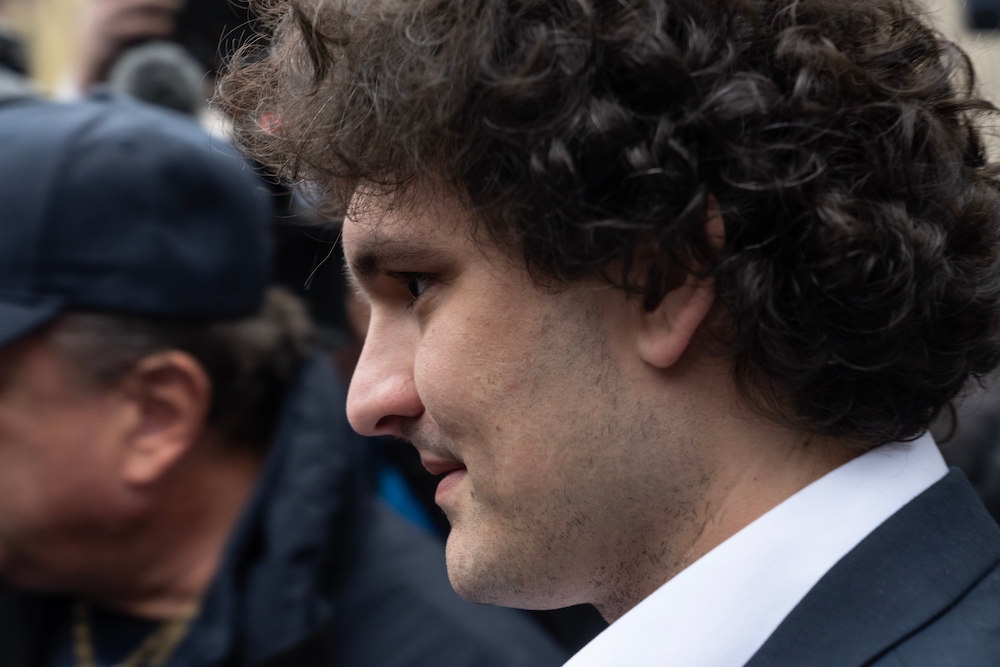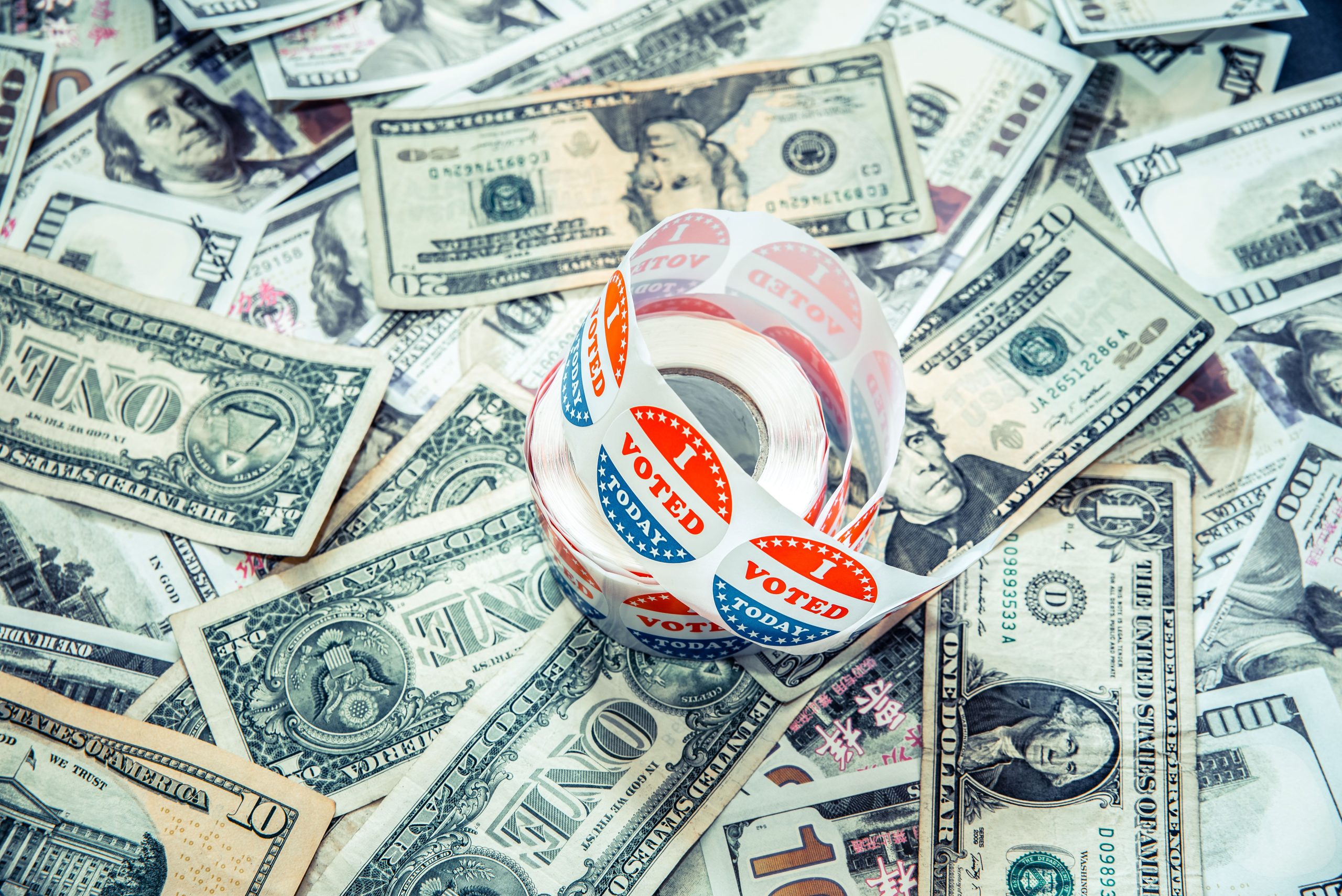Investors Should Have Seen FTX Coming

By R. Jeffrey Smith
Managing Director, RosettiStarr LLC
(A version of this article was published on March 26, 2023 in Barron’s.)
Everything looked ideal, until it didn’t. A supposed whiz kid with MIT branding who had made a small fortune in currency-price arbitrage invited investors to make much larger fortunes, using a special trading sauce whipped up for a hot new financial arena. He set up a workplace offshore—but wasn’t everyone working remotely anyway? He had a cherub’s face, an earnest demeanor, and an impressive family pedigree.
Sam Bankman-Fried even looked the tech-guru part, dressing in classic sweats and cultivating a reputation for long office hours and ascetic living. He claimed, moreover, to be earning huge sums of money mostly to help others and make the world a better place. He spoke inspirationally about how his trading company would soon become accepted as a repository of savings and a venue for low-cost transactions. Its revenues were reported to have jumped from $90 million in 2020 to more than a billion dollars in 2021.
Bankman-Fried’s firms—FTX and Alameda Research—imploded spectacularly after a nine-day downward spiral in November that wiped out billions of investors’ dollars, led to his arrest, and forced him to surrender control. Bankman-Fried has pleaded not guilty, and the courts will decide his liability. But as far as investors are concerned, the FTX saga is hardly the first time investment assets have evaporated on this scale amid plentiful signals that mischief was afoot, a lesson that hasn’t fully sunk in and could easily be missed again.
Bernie Madoff’s Ponzi scheme defrauded thousands of investors out of tens of billions until he was arrested in 2008. Bankman-Fried’s operation echoes one set up 17 years earlier by a Texan named Allen Stanford, who set up trading operations on an island, hired his former college roommate as an executive, arranged off-books loans from his firm, and went on to fleece thousands of investors out of roughly $7 billion, some of which he spent on real estate and other lavish perks. Stanford was convicted in 2012 of defrauding customers and sentenced to 110 years in prison.
Watching another big scandal unfold—followed by congressional investigations amid hand-wringing about regulatory distraction—prompts fresh wonder about whether the financial system is so rickety and reliable corporate data so spare that ambitious investors are simply doomed to periodically lose their shirts. Investors looking at recent crypto losses have reason to ask whether the FTX fiasco could have been foreseen, and whether the problems that are now dogging Bankman-Fried are lurking elsewhere.
A third of the members of Congress—who recent tallies indicate took in roughly $93 million in political donations from FTX employees over the past two election cycles, funds they were asked to return by the end of February—clearly did not ask those tough questions. But a close look at FTX’s history makes clear there were red flags that could have sowed alarm for potential investors, regulators, and politicians, if only they’d conducted a serious research effort and paid attention to the results.
To start with the basics, Bankman-Fried was candid long before his indictment about his weak preparation for creating Alameda at the age of 25. His undergraduate degree was in physics. He wrote on Twitter in August 2020 that he’d had trouble in school and “spent most of my life learning to be ok-but-not-very-good” at online gaming. At FTX, he was well-known, in fact, for gaming during business meetings, including during a digital February 2022 appearance at the Economic Club of New York. His habit abetted his reputation as an oddball savant but should have been seen instead as a signpost of inattentiveness to fundamentals—an impactful shortcoming for someone forging a new path in an unregulated economic sector.
Bankman-Fried admitted in the same 2020 Twitter thread that a year after founding Alameda the company was beset by internal conflicts, producing “some really shitty times. A management dispute I didn’t know how to resolve boiled over and a bunch of employees left in early 2018.” One of those who left was Tara Mac Aulay, an Alameda co-founder who said in a November Tweet that the resignations were “in part due to concerns over risk management and business ethics.” In all, at least sixty-six FTX employees left the company before September 2022 and posted resumes on LinkedIn, creating a reservoir of information about the firm that potential investors could have exploited.
The staff that remained at FTX and Alameda after these departures was noticeably young and inexperienced. As an April 9 report to the bankruptcy court by FTX debtors noted, they had no previous exposure to “risk management or running a business, [yet] controlled nearly every significant aspect of the FTX Group.” The ambience was more like that of a college fraternity than a multi-billion-dollar business. Company expenses were approved by emojis in a Slack channel. FTX’s head of engineering, Nishad Singh, was a high school friend of Bankman-Fried’s younger brother, and Singh’s girlfriend was the FTX human resources chief; Singh took out a $543 million loan from Alameda, according to court filings. Singh has pleaded guilty to multiple criminal charges.
In 2021, the first year that FTX pulled in more than $1 billion in revenue, FTX and Alameda co-founder Caroline Ellison, 28, tweeted that there is “nothing like regular amphetamine use to make you appreciate how dumb a lot of normal, non-medicated human experience is.” Alameda, which she ran, persistently lost money during its brief existence, accounting for its eventually fatal dependence on FTX bailouts. None of this should have been a surprise. “We tend not to have things like stop losses,” she said in a podcast in May 2022. Stop losses are tools to manage trading risk. In a private, internal communication, Bankman-Fried called Alameda “unauaditable” due to the absence of reliable transaction records, a circumstance he actually described as hilarious.
When speaking in a Jan. 2022 conversation with George Mason University economics professor Tyler Cowen published as a podcast two months later, Bankman-Fried also made clear that his personal tolerance for risk was extraordinarily high. But journalists as well as analysts ignored that flash of dangerous candor, and Sequoia Capital – a firm with $85 billion under management – in September published an article by a contract business writer that called Bankman-Fried “instantly lovable” and a “trader’s trader”; it also extolled his “daring feat of arbitrage” at the outset of his career and his accumulation of “more wealth in a shorter period of time than anyone else, ever.” Neither the author of that article nor the head of digital asset research at Forbes Magazine, which celebratorily featured Bankman-Fried on its Oct. 2021 cover, noted – as the debtors report eventually did – that the FTX head was functioning throughout this period in a vacuum of “independent or experienced finance, accounting, human resources, information security, or cybersecurity personnel or leadership.”
What besides radiant PR fumes gave FTX such impressive sales? It turns out that its marketing sometimes followed a notorious boiler-room model, a circumstance that escaped wide notice because no one appears to have talked to its customers. After the implosion, the New York Times revealed that when Bankman-Fried circulated specific investment opportunities to regular clients, he attached 24-hour deadlines to qualify for the best prices. As one investor told the newspaper, the terms of the offers seemed like “code for saying ‘no diligence.’”
No prescandal review appears to have rigorously compared Bankman-Fried’s public claims of personal privation and devotion to philanthropy with his actions. He told a reporter he planned to keep just 1% of his earnings. But the $190 million in total donations made by FTX’s charitable foundation through the end of 2022 were essentially a rounding error (seven tenths of one percent) for someone with a personal fortune—premeltdown—estimated at $26 billion to $32 billion. The gap was another sign that beneath Bankman-Fried’s claim to huge business acumen was a genuine talent for exaggerated self-promotion, a goal he has acknowledged in several postbankruptcy media interviews. A Feb. 8 court document filed in the Bahamas makes clear that FTX spent more on fancy properties and vehicles used by his employees—$257.4 million to be precise—than the FTX foundation funded by Bankman-Fried and his executives spent on philanthropy. Data of this kind is routinely recorded in retrievable public records.
Some of Bankman-Fried’s and FTX’s expenditures were not public, or reported, because his company, like Allen Stanford’s, chose to operate under much lighter disclosure rules than those governing firms in the United States or other industrialized countries. By itself, the offshoring of his work—first in Hong Kong and then in the Bahamas with retained Hong Kong connections—was a waving red flag, signaling that neither regulatory authorities nor the threat of public shame from adverse financial statements imposed real burdens on FTX for most of its existence. The absence of information, as any Sherlock Holmes devotee knows, can be significant. And at the FTX Group, there were, as the company’s bankruptcy trustee John J. Ray III has testified, virtually no “audited or reliable financial statements.”
Not everything alarming about the company was hidden; it was instead largely ignored. FTX’s U.S. branch had transparently bumpy relations with financial regulators, for example, including a clearcut conflict with the government about the company’s trust and credibility. Last August, the Federal Deposit Insurance Corporation publicly ordered FTX U.S. to cease claiming that its products or accounts were federally insured.
The company’s U.S. president Brett Harrison—whose statements were specifically cited by the FDIC complaint—said “we really didn’t mean to mislead anyone.” But the firm’s exaggerated claims could have been read as signposts of an unscrupulous corporate culture and a harbinger of shortfalls in its revenues and profits. In late September 2022, Harrison notably stepped down from his position as U.S. CEO position, claiming four months later that he did so because his “relationship with [SBF]… and his deputies had reached a point of total deterioration, after months of disputes over management practices at FTX.” He also called his former boss insecure, prideful, spiteful, and volatile. That level of dysfunction should certainly have been discoverable.
The FDIC’s letter, moreover, went to FTX’s president and its chief regulatory officer, Dan Friedberg, who had a noticeably blemished employment record. Friedberg had been a counsel to the online poker site UltimateBet in the mid-2000s as it attempted to cap payouts to customers cheated by the firm’s software. Although a recent version of his LinkedIn profile omitted mention of his work for the firm, that omission was itself another problematic signpost.
To recap, then, those bewitched by Bankman-Fried ignored or simply failed to search for evidence of his low qualifications, his team’s inexperience, the alarming qualities of its work habits, the large gaps between his promises and actions, the absence of any leavening executive influences or meaningful independent oversight, and a history of major clashes between Bankman-Fried and staff or regulators. All of this was discoverable before the bankruptcy.
Was FTX’s downfall predictable? You bet it was. And there’s plenty of reason to believe the next big downfall will also be predictable – so long as a careful search is made in advance for the right cues, and the results are heeded.


